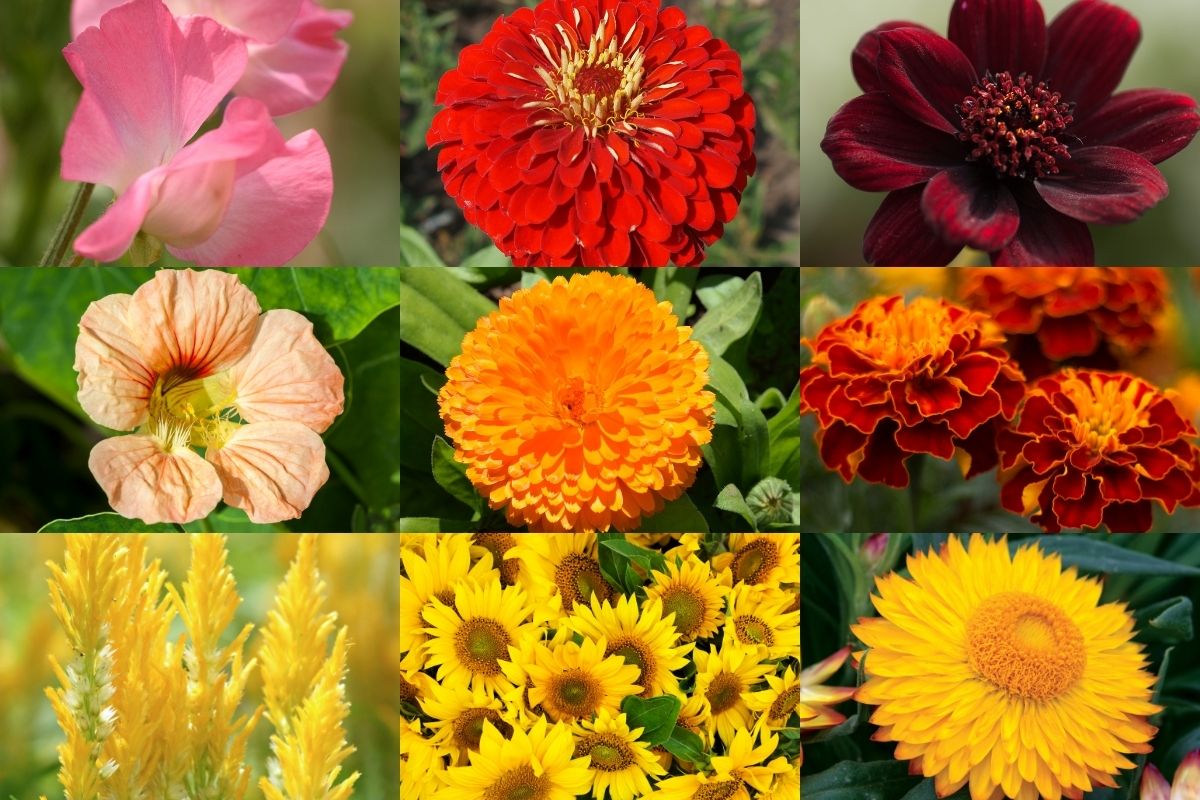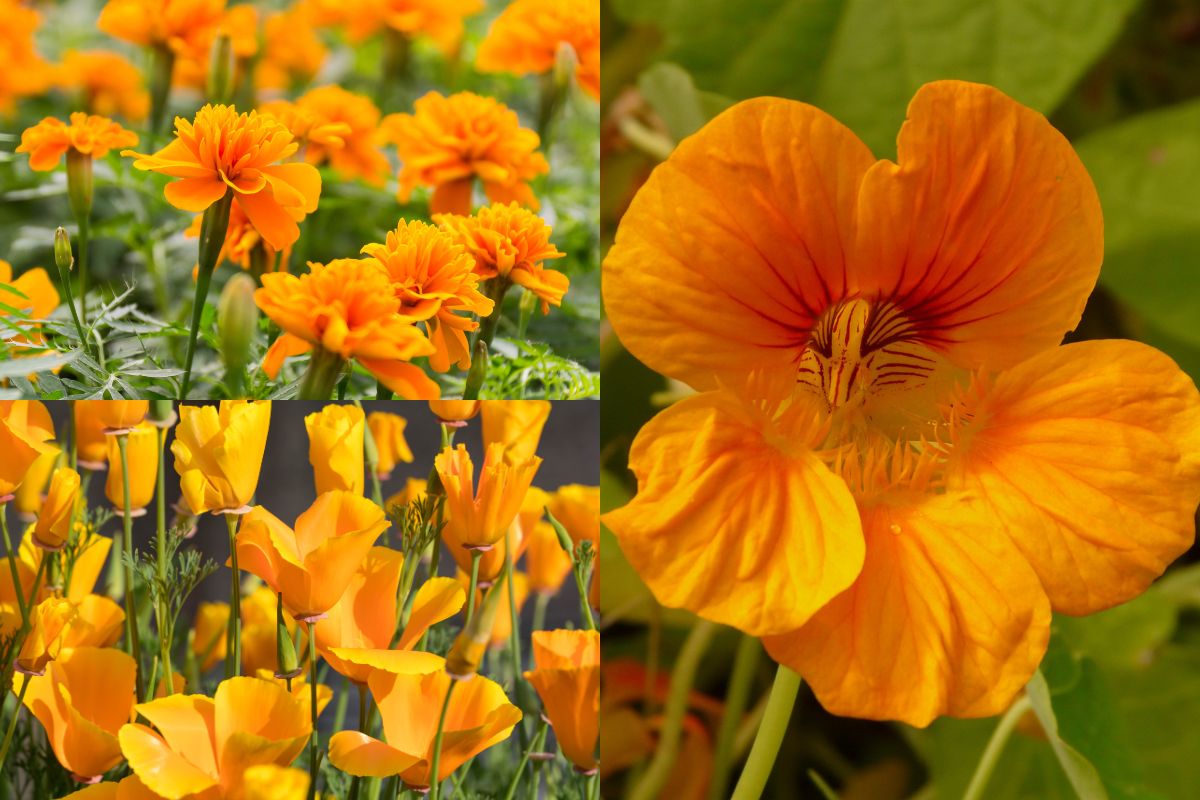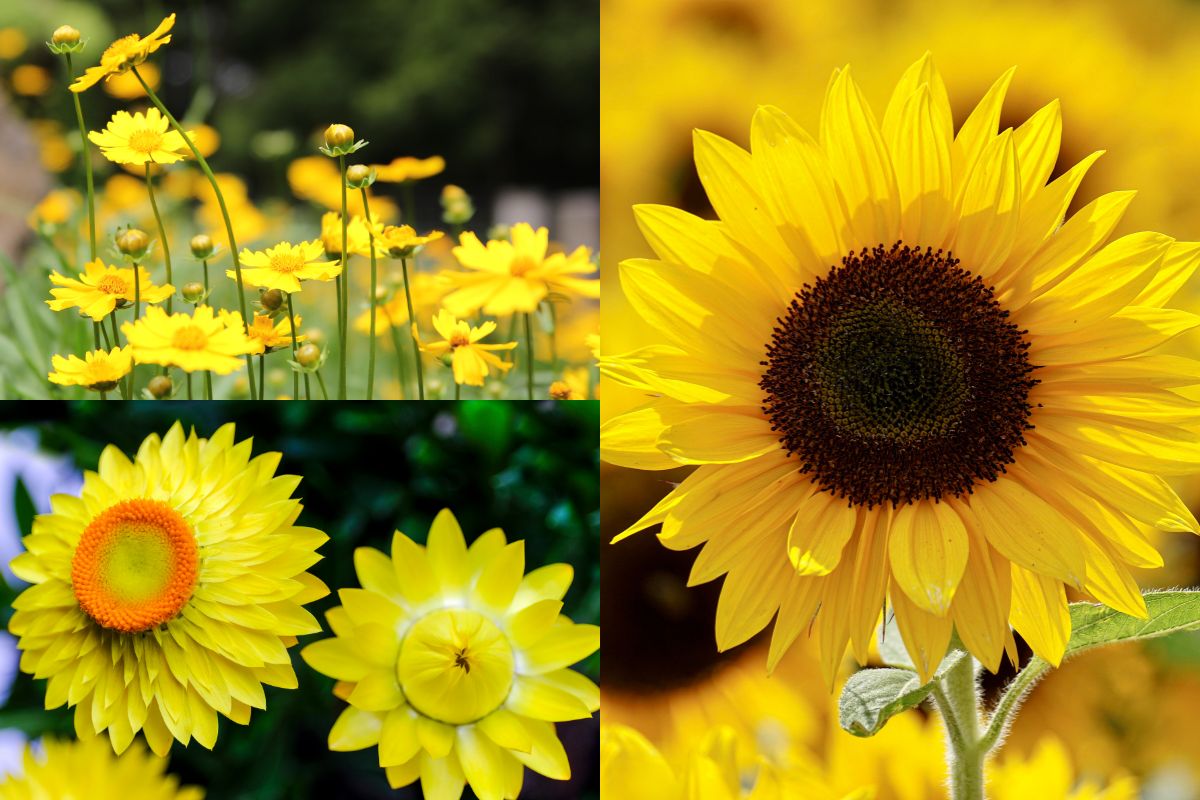It’s no secret that warm colours like red, orange and yellow make us feel happier and more energised, and like the cooler blues, mauves, purples, and greens they can also affect and change the feel of your garden.
Many flowers are these warm bright colours and they attract various pollinators such as birds, bees and butterflies. This is not to say pollinators aren't attracted to other colours like blues and purples, but birds are often particularly attracted to red flowers, while butterflies love reds, pinks and yellows.
This is useful to know if you're keen to attract more wildlife to your garden, so let’s have a look at these warm colours more closely and how you can use them to best effect in your garden, not only to attract wildlife but also how they work in a garden design.
There's a very wide range of flowers to choose from if you want to create a 'warm' garden, but to help narrow things down, or if you're not really sure where to start, we've included a selection of flowers to point you in the right direction.
The Warm Colours
First of all, what are the warm colours? The warm colours are red, orange and yellow, and various shades and hues of these colours. They sit next to each other on the colour wheel and also in the rainbow.
Red can be clear and bright, or dark, intense and rich. Shades of red include eye-popping cerise which is a vibrant pinkish-red, magenta which is a purplish-red, and burgundy which is deep reddish-brown. Pink is a pale red and usually has a slight bluish tint to it.
Orange lies between red and yellow on the colour spectrum. Like red, it can be clear and bright, and also comes in several shades including coral which is a pinkish-orange, terracotta which is an orange-brown, and apricot which is a more pastel yellowish-orange that often looks more pinkish-orange. Peach is described as a unique blend of orange, yellow and white, and is a soft pale orange colour. This pastel tone is useful if you want the warmth of orange but not the vibrancy.
Yellow ranges from a light clear colour, through bright canary yellow (a term first used in 1789), to deep golden shades. Lemon is a clear, bright, light shade of yellow, while gold or golden is a strong yellow-orange. Cream is a pale tint of yellow and blends well with the other warm shades.
Brown can also be considered a warm colour, and is sometimes defined as a dark shade of orange. It is not commonly encountered as a flower colour.
 Flowers in warm colours and shades
Flowers in warm colours and shades
How to Use Warm Colours in Your Garden
While the cool colours bring a sense of peace, calm and tranquillity to a garden design, warm colours tend to do the opposite, bringing a sense of cheerfulness, liveliness and movement, as well as vibrant energy to the garden.
Warm colours are excellent for brightening up spots in your garden, and can help open up a space by drawing your eye and encouraging it to move around the garden. However, in a small space like a courtyard, warm colours tend to dominate and instead of opening up the space they can make it feel crowded and therefore smaller rather than larger. If you still want or prefer to use warm colours, then opt for the paler shades. They'll still bring the warmth, openness and liveliness to the space but won't dominate as much and will create a gentler experience.
A vibrant, cheerful, colourful garden may be what you’re looking for, but take care when using the bright warm colours. Too many pops and splashes of colour can make your eye jump around all over the place as you try to take it all in, and instead of leaving you feeling energised and happy, the busy-ness of the garden may just leave you feeling visually overwhelmed and exhausted instead!
Warm colours can be brilliant for offsetting some of the cooler colours and can be used to 'warm up' a cool colour scheme. For example, when teamed with blue, lemon-yellow or even golden-yellow, along with a bit of white or cream to balance everything, can create a sense of uplifting restfulness.
You may wish to try a monochromatic colour palette, where you choose just one of the warm colours for your garden. Choosing flowers that have different shapes or forms, or which are different shades and hues of your chosen colour, will help keep the design interesting and you'll avoid the 'monoculture' look.
If you create a ‘warm garden’ using only red, orange and yellow flowers, then the trick here is to choose colours so that you have a good mix of the bright and paler shades. This is so that they blend well and don’t create the busy-ness mentioned earlier.
Don't forget to include some neutral colours in mind when planning your garden. These colours don't change the effect you want to achieve, can help offset certain colours, and can tie a design together. Familiar neutral colours are white, black, grey, and shades of brown. Cream is also a neutral colour and works well with the warm colours, helping to tone some of their liveliness down while still allowing them to stand out. Green is also considered a neutral colour in gardening as it blends well with most other colours and is also useful as background colour.
Warm Coloured Flowers that You Can Use
As with the cool coloured flowers, you are almost spoilt for choice when it comes to finding flowers in the warm and bright shades.
Classic easy-to-grow flowers in the warm colours include Californian poppies, nasturtiums and zinnias. These flowers come in all three of the warm colours, red, orange and yellow, and many shades in between.
Calendula and marigolds, both the African and French varieties, offer orange and yellow in all shades, and these too, are very easy to grow.
 Orange flowers - marigold (Tagetes), Californian poppy, and nasturtium.
Orange flowers - marigold (Tagetes), Californian poppy, and nasturtium.
You'll find red in various shades in celosia, Flanders poppy, salvia, Sturt’s Desert Pea, and in some sweetpeas and violas.
.jpg) Red flowers - salvia, celosia, and Flanders Poppy.
Red flowers - salvia, celosia, and Flanders Poppy.
For bright yellow you could use coreopsis, billy buttons or everlasting daisies but the ever-cheerful sunflowers are of course the most bold of all the yellow flowers.
 Yellow flowers - coreopsis, yellow everlastings and sunflowers.
Yellow flowers - coreopsis, yellow everlastings and sunflowers.
Nature’s Flamboyance
Mother Nature doesn't really go for a curated colour palette, whether it be warm or cold, and instead comes up with some awesome colour combinations that create jaw-dropping and spectacular mass displays.
This means that spring, in places like Western Australia and the west coast of South Africa is simply stunning when millions of wildflowers, mostly annuals, bloom across the plains. Colours that you’d probably never think of, or want to put together in your garden, work surprisingly well in these large open spaces. You'll find flowers with opposing colours like blue, orange and yellow, bright pink, yellow and purple, or orange and purple growing together, and in European meadows, poppies, daisies and cornflowers do a great job of bringing the three primary colours of red, yellow and blue together.
Of course, the main reason for this bright kaleidoscope of colour in nature is to attract a wide range of pollinators, and although these colour combinations might seem counter-intuitive, you might like to give this gloriously flamboyant look a go in your garden.
.jpg) Top left: pink, yellow and blue flowers in Australia; Top right: red, yellow and blue flower in a European meadow; Bottom: blue yellow and orange, as well as orange yellow and purple in Namaqualand, South Africa.
Top left: pink, yellow and blue flowers in Australia; Top right: red, yellow and blue flower in a European meadow; Bottom: blue yellow and orange, as well as orange yellow and purple in Namaqualand, South Africa.
***
While sticking to either a warm or cool colour palette may help you plan your garden or create a certain look and feel, none of these rules are written in stone. You are always free to mix and match colour palettes, and it's your garden, so the only real aim is to create something you love and which brings you joy.
Remember, if you're using annual flowers to create your colour schemes and you don't like how it turns out, it is very easy to change it the following year and try something new. So, our advice, whether you'd like to put together a carefully curated warm garden or create something flamboyant and exuberant inspired by nature, is to just go for it, and as always, have fun in your garden!
Did you know you can use the filters on this website to browse flowers by colour?
- Browse blue flowers
- Browse purple/violet flowers
- Browse white/cream flowers
- Browse pink/rose flowers
- Browse yellow flowers
- Browse red/crimson flowers
- Browse orange flowers
- Browse green flowers
- Browse chocolate/brown/black flowers





